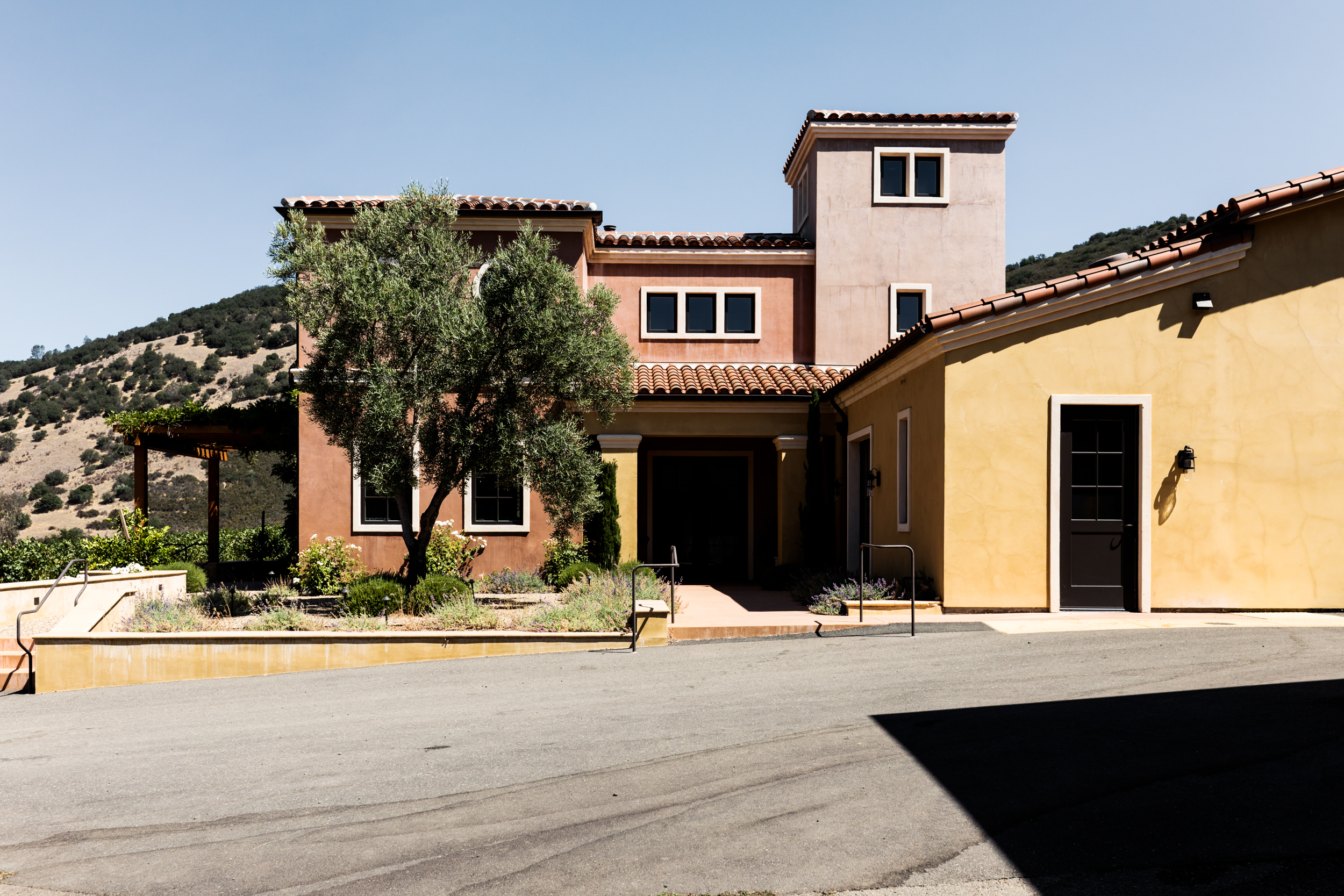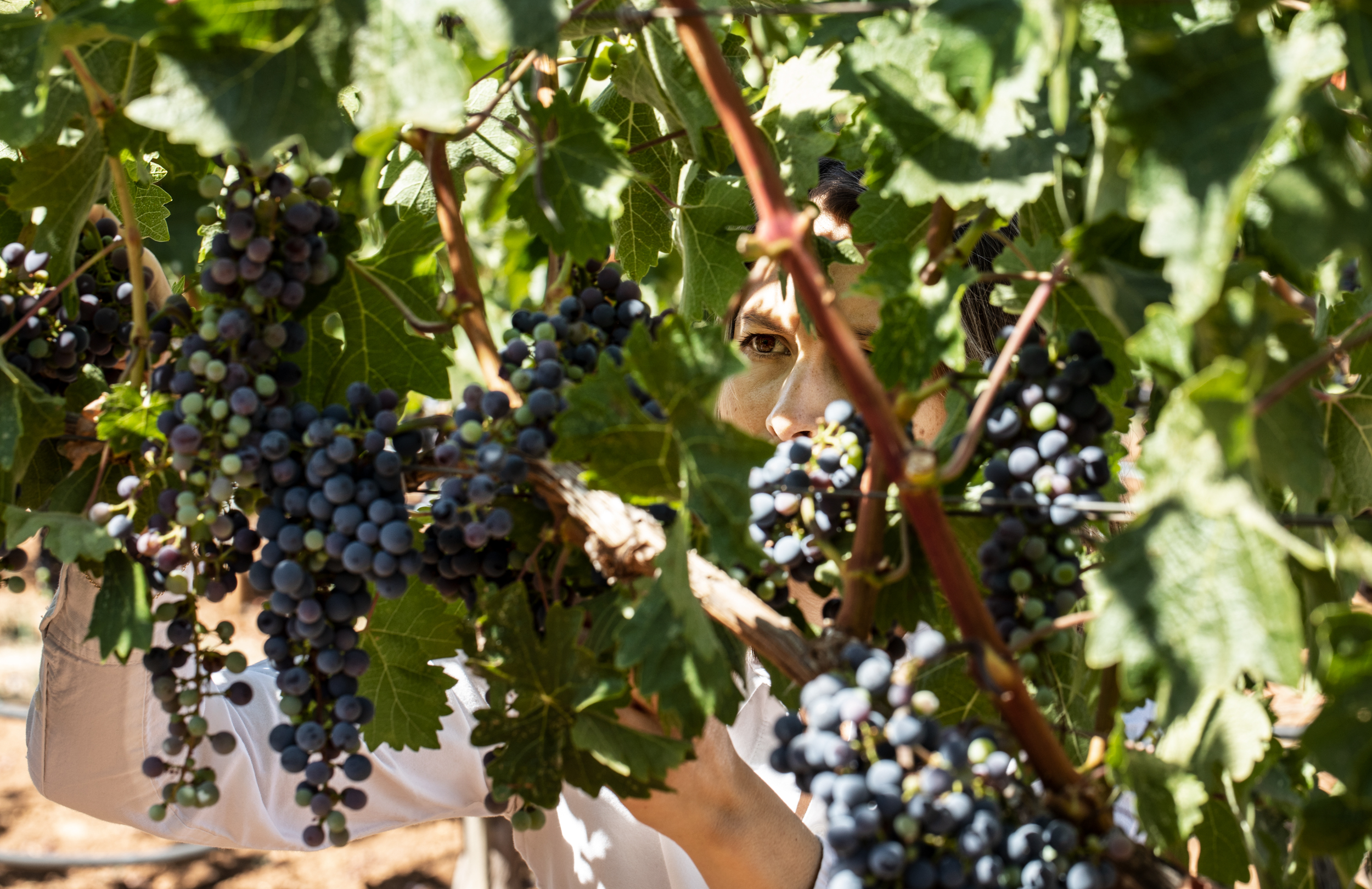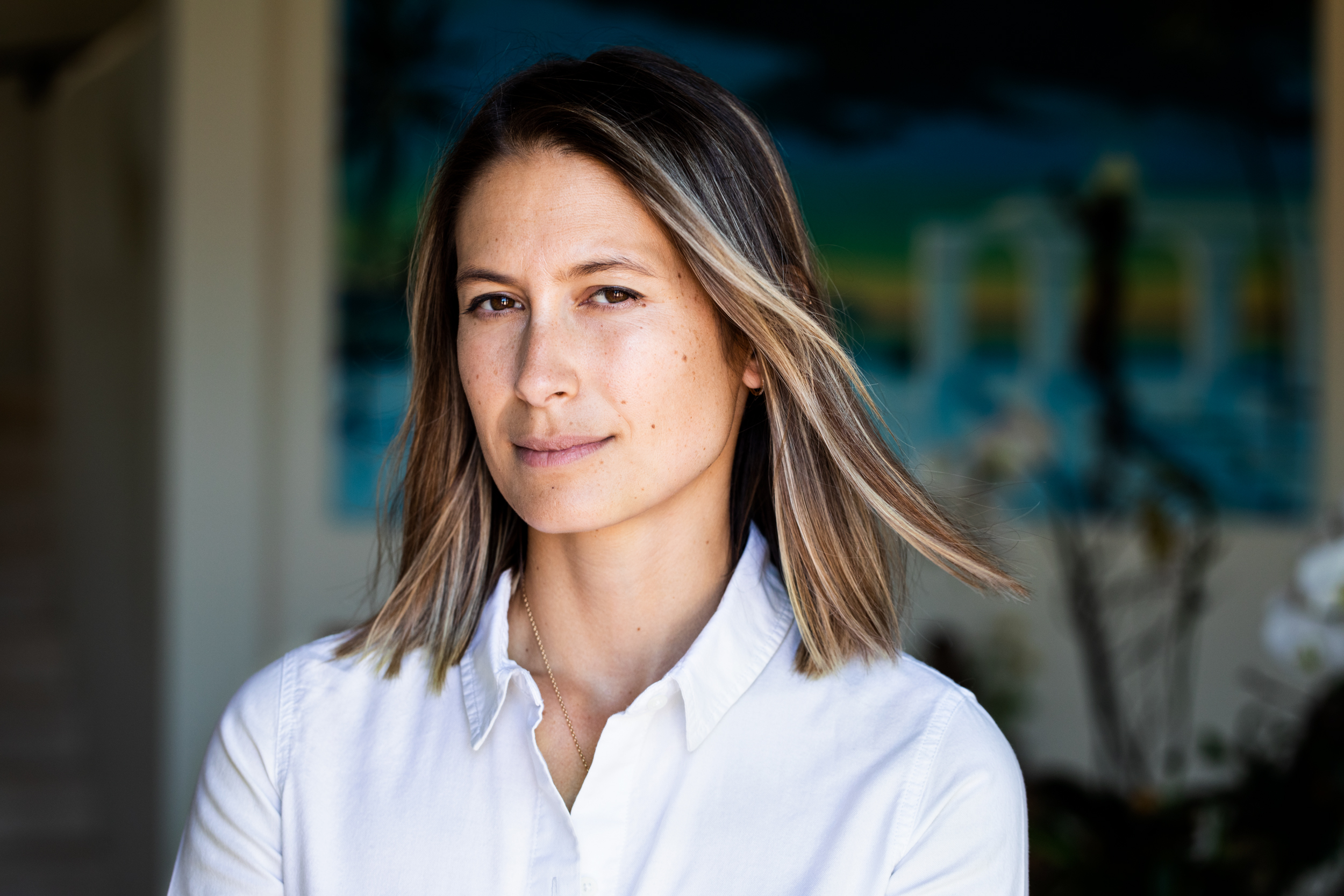07th Dec 2023
Every new harvest season, each morning, Naoko Dalla Valle can be found on the sorting line with her team.
“Mom has a thing about sorting the grapes,” Maya tells me as we approach the vibrating table. “She can’t help herself.”
Naoko smiles. “It’s a compulsion—I have to touch the grapes!”

Reflection Selection
Gustav and Naoko purchased the land for Dalla Valle in the early 1980s. Perched on a geological bench within the Vaca Mountains’ foothills on the valley’s eastern side, at an altitude of 400-500 feet, today, it’s one of the most enviable sites in Oakville. Pritchard Hill sits above it; Screaming Eagle, Tench, and Rudd vineyards are on the valley floor below. The view from the winery and vineyard is breathtaking.
The first vintage of the Dalla Valle Cabernet Sauvignon was 1986.
In 1987, the year Naoko and Gustav’s daughter Maya was born, an adjacent parcel of land was purchased, and five acres of this was planted to Cabernet Sauvignon, increasing the total area under vine to 20 acres. This vineyard section was named Maya. From 1988, the Cabernet Sauvignon from this Maya parcel was blended with wine made from an existing block of Cabernet Franc in nearly equal proportions, making for an unorthodox Napa blend at the time. This became the first “Maya” label wine.
Then, in 1995, less than ten years after Dalla Valle was launched, Gustav passed away, leaving the estate in the hands of his wife and young daughter. Instead of selling the winery and returning to her home country of Japan, Naoko was committed to continuing the project she and her husband had started.
Maya earned a master’s degree in viticulture and enology from Cornell University, followed by a Master of Business and Science degree in vineyard and winery management from France’s Bordeaux Sciences Agro, one of the world’s leading viticulture and enology colleges. After her studies, Maya worked harvests at Ornellaia/Masseto, Bodegas Rolland (Argentina), Petrus, and Château Latour. In 2017, Maya returned to Dalla Valle and joined her mother as a director of the winery. In January 2021, she was named the estate’s winemaker.

On October 3rd this year, instead of heading straight into the Dalla Valle tasting room to sample their new 2021 releases, I spent a harvest morning with Naoko and Maya Dalla Valle, observing as they brought in four tons of Cabernet Franc from one of their hillside blocks.
Naoko and I spoke while sorting berries.
“We’ve picked a little Cabernet Franc so far, but most is still hanging,” she says. “The Franc bunches are slightly smaller this year, but there’s a little more of them, so it evens out. We only began picking last week. We used to hire six additional people for the sorting, but since COVID, we work in-house, and it’s more efficient.”
There’s no optical sorting here.
2023 is a late harvest for Napa Valley. It’s been an unusually cool, extended, yet blissfully dry growing season. Coupled with the cool weather, the mornings have been foggy, further stretching out the ripening process. Spring had set a large crop, so fruit thinning was a critical factor in getting the fruit ripe.
The bunches are healthy this year, so there’s not much to sort. Naoko works fast, with a keen eye. There’s no optical sorting here.
“We’ve considered optical sorting,” says Maya, “but we like maintaining the diversity of flavors you get like this.”

When the sorting is finished, we walk the key vineyard blocks, tasting fruit that is still hanging. The berries have nearly reached optimal flavor and tannin ripeness, yet need to hang for another couple of weeks. Fortunately, the canopies are still active and not fatigued; there’s still much work for the vines.
“Our harvest was finished on September 16th in 2022, but in 2023, it didn’t start until late September,” says Maya. “The brix levels of the fruit that has come in so far is 23.5-24.5 (about 14-14.5% potential alcohol). We’re seeing ripeness at a lower alcohol level this year.”
Areas of the vineyard are a slow, steep climb. The dirt is stained a vibrant rusty-orange color, composed of iron-rich bedrock. Like neighboring Pritchard Hill, the land here is marked by protruding, often immovable boulders.
“The four tons of Cabernet Franc that came in this morning is from this one-and-a-half-acre parcel,” says Maya. “The vines are 15 years old. We start picking at 3 a.m. As with the sorting line, we have our own harvest crew.”
I ask about clonal material.
“Our Maya Clone of Cabernet Franc is proprietary. It originally came from Mount Veeder, but no one recorded any information about clones back in the early 1980s, so we don’t know what it is. We now use our own budwood for new plantings.”
We arrive at Maya Block, which was replanted in 2003 to a north-south orientation.
“Since 2013, Maya Block is harvested in two passes,” Maya tells me. “The morning side ripens more quickly and tends to be brighter, fresher, and more austere. The afternoon side is richer and lusher. Sometimes, the sides are harvested ten days apart.”
Above the canopies of the Maya Block, I notice that misters have been installed.
"During the heatwave in 2022, the blocks we had misters on made a big difference," says Maya.
One of the most successful reported strategies in minimizing the impact of the Labor Day heatwave in 2022 was the use of overhead misters. Pioneered more than a decade ago by Napa blue chips such as Hundred Acre and Harlan Estate, these are sprinkler devices installed near the top of the canopy that deliver a continuous mist over the fruit and surrounding canopy throughout the heat event. Misters have become increasingly common around the valley in the last couple of years.
“We only use these when the temperatures are over 95 degrees,” Maya continues. “In 2022, we picked through the heat event. We started harvesting at the end of August, so we had some fruit in before the heat. The Cabernet Franc did very well, but the Cabernet Sauvignon froze. We had to sort the Cabernet Sauvignon a lot. Then, we gauged the pump-overs carefully. The wines have developed nicely. You can’t fight the vintage. It’s a bigger vintage, and the wines are bigger.”

Back at the winery, I’m surprised to see everything has changed.
“Yes, we have a new winery this year!” Naoko exclaims. “Everything is new. Our old building had to be extended and so we had to change the foundation. Now we have new concrete and stainless-steel tanks. And all automatic pump-overs now. It was manual for about half the tanks in the old winery. New floors and drains. With this design, we can conserve water by pushing wastewater with a squeegee rather than a hose.”
In the tasting room, we check out the recently bottled 2021s.
“In 2021, the drought was intense, so we have lower yields,” says Maya. “We were finished harvesting before the third week of September. The way the tannins are aging (slowly), we gave the 2021s a little longer in tanks before bottling.”
“2021 is Maya’s first official vintage as winemaker,” Naoko points out. “And we made an MDV in 2021—the first since 2018.”
MDV is a bottling of pure Cabernet Sauvignon from the Maya block. It is only made in outstanding vintages and when a portion of the Cabernet Sauvignon can be isolated and bottled separately without taking away from the Maya label.
"You can really see what the Franc brings to the blend when you see Maya and MDV side-by-side," says Maya.
These two top wines from Dalla Valle are stunning. The Maya seems to be holding back just slightly compared to the powerful personality of the MDV right now, but I suspect in few years the Maya will burn just as bright. A comparative tasting after ten years or more in bottle will be a fairer comparison.
The 2021 Dalla Valle wines were bottled on September 15th, 2023, and will be released in the spring of 2024. Total production at Dalla Valle is around 3500 cases. All the estate fruit is certified organic.

PRODUCERS IN THIS ARTICLE
> Show all wines sorted by scoreMore articles

Cathiard Vineyard New Releases
02nd May 2024
3 tasting notes

Bordeaux 2023 Preliminary Vintage Report and Reviews from Barrel
29th Apr 2024
56 tasting notes

2021 Bordeaux in Bottle and A Modest Proposal
24th Apr 2024
599 tasting notes

Pilcrow’s New Releases
18th Apr 2024
7 tasting notes
Show all articles